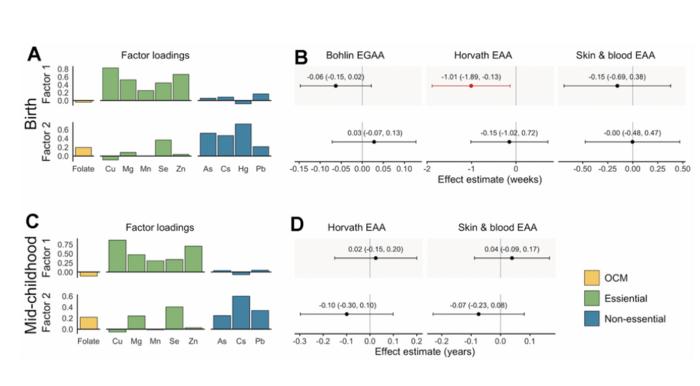- The country, with an increasing immunoglobulin (Ig) usage rate, currently imports about 85% of its Ig demand for patients in Canada who rely on this lifesaving plasma-protein therapy
- Building on its investment in a large-scale fractionation facility in Montreal, Grifols will manufacture plasma sourced in Canada to provide finished product exclusively for Canadian Blood Services to help it reach at least 50% Ig self-sufficiency for Canadians
- Under a 15-year agreement with options to renew, an incremental 2.4 million grams of Ig will be provided annually for Canadian patients and Canadian Blood Services, with pricing in line with Western market values and subject to periodic reviews
- Once more Grifols demonstrates global leadership forging alliances between the plasma industry and the public sector as the best way to ensure domestic plasma self-sufficiency
BARCELONA, Spain, Sept. 7, 2022 /PRNewswire/ -- Grifols (MCE: GRF) (MCE: GRF.P) (NASDAQ: GRFS), a global leader in plasma medicines with more than 110 years contributing to improve the health and well-being of people, today announced it has signed a pioneering long-term agreement with Canadian Blood Services, Canada's national blood authority, to greatly increase the country's self-sufficiency in immunoglobulin (Ig) medicines, essential plasma-protein therapies used to treat a wide range of immunodeficiencies and other medical conditions.
It's the first-ever agreement of its kind and will ensure Canadian plasma is processed into Ig medicines on Canadian soil for the exclusive needs of the thousands of patients in the country who critically depend on these lifesaving therapies.
Canada has a high Ig usage rate and currently needs to import as much as 85% of its Ig, with demand growing an average of 5-8% annually.
The collaboration agreement with Canadian Blood Services, part of Grifols' long-term global growth strategy, will combine with the work already being done by Canadian Blood Services to accelerate Canada's Ig self-sufficiency rate from 15% to 50% in the shortest time possible.
Under the agreement, Grifols will work with Canadian Blood Services to steadily increase sourcing of the Canadian plasma necessary so that volumes eventually reach 2.4 million grams of Ig medicines annually by 2026.
Over the life of the 15-year renewable contract, Ig pricing will be in line with Western market values and subject to periodic reviews.
Grifols' newly built, state-of-the-art Montreal plant is expected to start operations in 2024 and be fully operational sometime in 2026, when the company will become the only large-scale commercial manufacturer of plasma products in Canada. Until then, production will take place at its site in Clayton, N.C.
Signaling its long-term commitment to the Canadian market, Grifols in 2020 invested over USD 400 million in its Montreal facilities, including a fractionation plant with a capacity of 1.5 million liters annually and two purification plants. Since then Grifols has been expanding and converting the installations. In early 2022, Grifols acquired its first donation center in Canada, in Winnipeg (province of Manitoba).
"Grifols is committed to helping Canada on its self-sufficiency journey to ensure patients in Canada receive the life-sustaining plasma medicines they need," said Víctor Grifols Deu, co-CEO of Grifols. "We will contribute our deep knowledge of the Canadian market and our decades of industry-leading experience collecting plasma and producing medicines that adhere to the highest standards of quality and safety."
Added Raimon Grifols, co-CEO of Grifols: "One key lesson from the pandemic is the need to establish the strongest possible domestic healthcare infrastructures that can reliably and sustainably provide critical plasma medicines to patients."
"With Grifols, Canada has an agreement to develop a critically needed end-to-end national supply chain for immunoglobulins," stated Dr. Graham D. Sher, CEO Canadian Blood Services. "This will improve sufficiency, protect our national blood system and ensure a domestic supply of immunoglobulins that patients in Canada can count on."
The alliance between Grifols and Canadian Blood Services builds on their longstanding relationship as well as the more than three decades Grifols has provided plasma medicines to Canadian patients. In addition to the new agreement, Grifols will continue providing contract manufacturing services to Canadian Blood Services.
The agreement with Canadian Blood Services is the most recent in a series of initiatives that Grifols has underway to help countries and regions increase self-sufficiency in plasma medicines. Increasingly Grifols' leadership is showing that alliances between the plasma industry and the public sector are crucial to ensuring domestic plasma security. The company's vast expertise comes from its leading global network of more than 400 plasma donation centers and the most advanced plasma manufacturing facilities, all operations renowned for their quality, safety and excellence.
Canadian Blood Services operates with a national scope, infrastructure and governance that make it unique within Canadian healthcare. In the domain of blood, plasma and stem cells, it provides services for patients on behalf of all provincial and territorial governments except Quebec.
About Grifols
Grifols is a global healthcare company founded in Barcelona in 1909 committed to improving the health and well-being of people around the world. A leader in essential plasma-derived medicines and transfusion medicine, the company develops, produces and provides innovative healthcare services and solutions in more than 110 countries.
Patient needs and our ever-growing knowledge of many chronic, rare and prevalent conditions, at times life-threatening, drive our innovation in plasma-based therapies and other biopharmaceuticals to enhance quality of life. Grifols is focused on treating conditions across a broad range of therapeutic areas: immunology, hepatology and intensive care, pulmonology, hematology, neurology and infectious diseases.
A pioneer in the plasma industry, Grifols continues to grow its network of donation centers, the world's largest with over 400 across North America, Europe, Africa and the Middle East and China.
As a recognized leader in transfusion medicine, Grifols offers a comprehensive portfolio of solutions designed to enhance safety from donation to transfusion, in addition to clinical diagnostic technologies. We provide high-quality biological supplies for life-science research, clinical trials, and for manufacturing pharmaceutical and diagnostic products. In addition, the company supplies tools, information and services that enable hospitals, pharmacies and healthcare professionals to efficiently deliver expert medical care.
Grifols, with more than 27,000 employees in more than 30 countries and regions, is committed to a sustainable business model that sets the standard for continuous innovation, quality, safety, and ethical leadership.
In 2021, Grifols' economic impact in its core countries of operation was EUR 7.7 billion. The company also generated 141,500 jobs, including indirect and induced.
The company's class A shares are listed on the Spanish Stock Exchange, where they are part of the Ibex-35 (MCE: GRF). Grifols non-voting class B shares are listed on the Mercado Continuo (MCE:GRF.P) and on the U.S. NASDAQ through ADRs (NASDAQ: GRFS).
For more information, please visit grifols.com.
LEGAL DISCLAIMER
The facts and figures contained in this report that do not refer to historical data are "future projections and assumptions". Words and expressions such as "believe", "hope", "anticipate", "predict", "expect", "intend", "should", "will seek to achieve", "it is estimated", "future" and similar expressions, in so far as they relate to the Grifols group, are used to identify future projections and assumptions. These expressions reflect the assumptions, hypotheses, expectations and predictions of the management team at the time of writing this report, and these are subject to a number of factors that mean that the actual results may be materially different. The future results of the Grifols group could be affected by events relating to its own activities, such as a shortage of supplies of raw materials for the manufacture of its products, the appearance of competitor products on the market, or changes to the regulatory framework of the markets in which it operates, among others. At the date of compiling this report, the Grifols group has adopted the necessary measures to mitigate the potential impact of these events. Grifols, S.A. does not accept any obligation to publicly report, revise or update future projections or assumptions to adapt them to events or circumstances subsequent to the date of writing this report, except where expressly required by the applicable legislation. This document does not constitute an offer or invitation to buy or subscribe shares in accordance with the provisions of the following Spanish legislation: Royal Legislative Decree 4/2015, of 23 October, approving recast text of Securities Market Law; Royal Decree Law 5/2005, of 11 March and/or Royal Decree 1310/2005, of 4 November, and any regulations developing this legislation. In addition, this document does not constitute an offer of purchase, sale or exchange, or a request for an offer of purchase, sale or exchange of securities, or a request for any vote or approval in any other jurisdiction. The information included in this document has not been verified nor reviewed by the external auditors of the Grifols group.
Logo - https://mma.prnewswire.com/media/847347/Grifols_Logo.jpg
View original content:https://www.prnewswire.com/news-releases/grifols-enters-into-agreement-with-canadian-blood-services-to-accelerate-self-sufficiency-in-immunoglobulins-for-canada-301619498.html
SOURCE Grifols















































